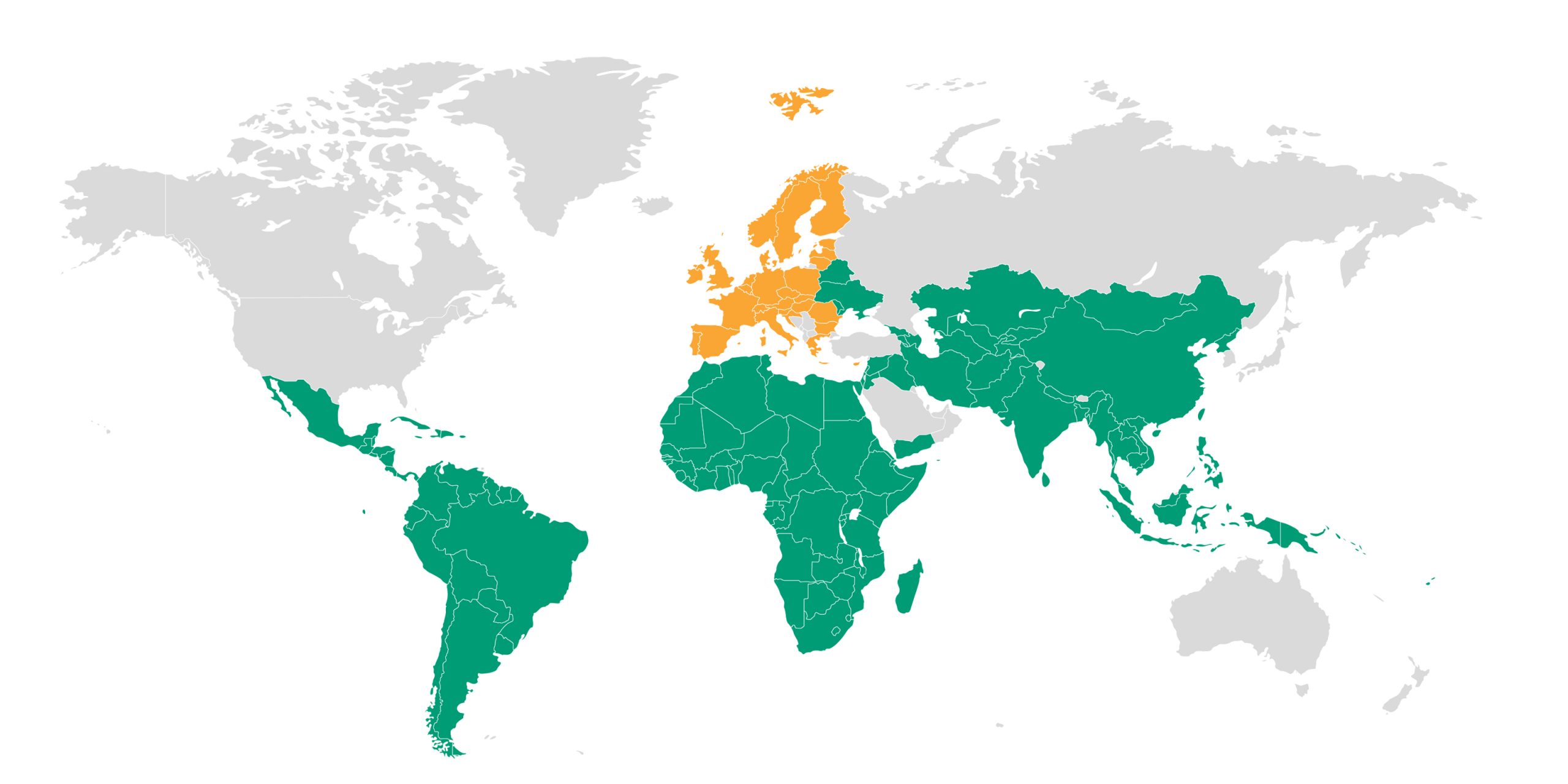Diaspora engagement map
EUDiF is exploring practices, policies and trends in diaspora engagement around the world through research and dialogue activities in order to build an open access knowledge hub on diaspora engagement.
The first step in this process was a global mapping exercise of DG International Partnerships’ partner countries. At the start of 2020, we mapped the first 50 countries with a team of regional experts. A second wave of research added another 57 countries in autumn 2020. The factsheets were updated in September 2022.
The results of the research are included in the interactive map. Individual country factsheets can be accessed via the map or the Library, where translations are also available. The findings help us to develop targeted capacity development activities and identify opportunities for dialogue and cooperation.
Statistics included in the map come from UN and World Bank datasets (during the September 2021 update, where data was unavailable for 2021, the 2019 dataset is used, as per the initial publication of the mapping). As diaspora definitions vary widely, we have chosen to use comparable data on emigration. We are aware that this does not include all who consider themselves diaspora. In certain cases national statistics are included in the fact sheets.
In addition to the world map of diaspora engagement, you can go directly to the regions EUDiF works with to learn about regional trends, pioneers and tailored recommendations on how to enhance diaspora engagement.
Note: The maps used are for illustration purposes only. They are based on UN methodology for statistical convenience and does not imply any assumption regarding political or other affiliation of countries or territories by EUDiF, the International Centre for Migration Policy Development or the European Commission.
Got a question about our maps? Email eu-diaspora@icmpd.org
